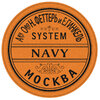Mr.navy six 2 and anyone else interested...as promised heres how i do it.
Materials you will need are:
1) paper to make cartridge (your choice of rolling paper, hair curling paper, coffee filter)
2) wax paper (to place on top and bottom of lube disc so as not to contaminate powder or cardboard disc that seals the cartridge)
3) rice paper used for placing in gift baskets (i use red)
4) mandrel or gauge pin (these have to be a specific size depending on caliber of gun. I use a .360 and .362 gauge pin for my .36 navies)
5) Deco cement (nitrocellulose glue) because it is flamable and leaves no residue or paper behind) but you can use a glue stick if you like i just prefer Deco cement
6) thin lube discs of your choice
7) cardboard or thick paper card stock to make cardboard discs (i use cereal or fruit roll up cardboard boxes)
8) 3/8ths inch paper hole puncher (to make rice paper, wax paper, and cardboard/card stock discs) but you will need to use a larger punch to make .44 cartridges
9) 3/8ths punch to punch out lube discs, but again you will need a larger punch if shooting .44, the 3/8ths is for .36 navy cal
First you need to choose your paper for your cartridge body. I use RAW brand rolling papers primarily, but have used hair curling papers, Zig Zag rolling papers, and thicker rolling papers such as Bugler and Tops. Heres the difference in color and thickness with a finished cartridge from each type of paper..

Next you have to size them by cutting them in half and trimming on side so that it wraps around the mandrel tool without too much overlap. The goal here is to not have layers of paper if possible, layers of paper wont always burn entirely


I use pin gauges since they are perfectly straight and can be had in any size needed down to a thousandths of an inch. I use .360 and .362 and they make cartridges that slide in perfectly and snugly into my chambers yey do it with ease.

Next you make the paper cartridge by wrapping the paper around the mandrel. Remember, Less overlapped paper is the goal as it ensures even complete burn

Then once its wrapped then scoot the paper cartridge up so u can fold over some paper over the edge of the mandrel.

Fold the paper evenly over the edge of the mandrel

Next, place glue on the paper you folded over and place a rice paper disc on it. This is the end that your percussion cap bursts through


Heres what it looks like on the inside











































































